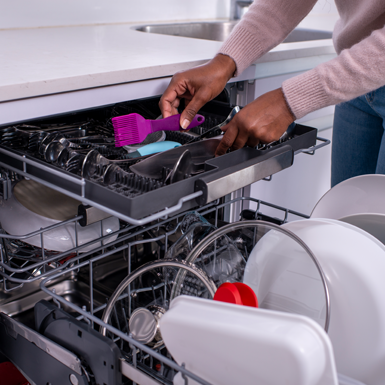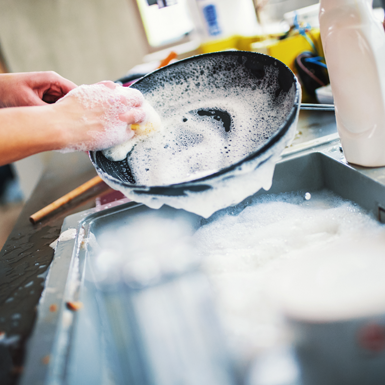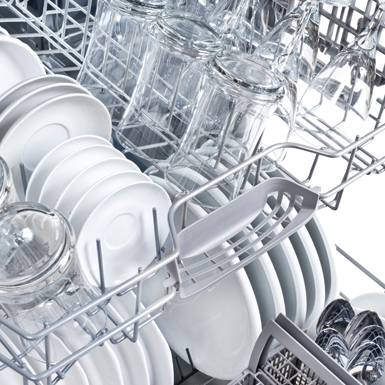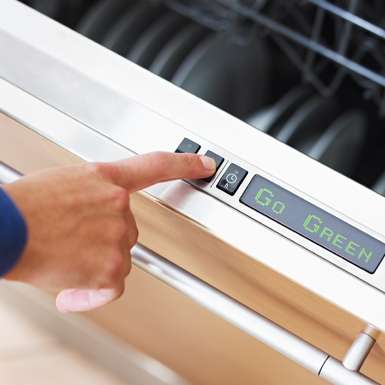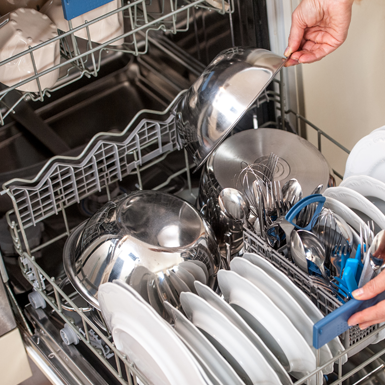Stack It Like It's Hot
Everyone believes their own way of loading a dishwasher is best, but is there a right and wrong way to stacking pots and pans? This simple task causes all sorts of family disagreements and can lead to secret re-stacking sessions after everyone has gone to bed.
We spoke to Luke Gammons from Wades in Cambridgeshire to put together this guide to help you load your appliance effectively – especially during the busy Christmas period.
Dishwashers don’t just have an impact on electricity bills, they can influence your water bill too. The Energy Saving Trust conducted an At Home With Water report, and the findings showed that hand washing dishes makes up 4% of average use, while a dishwasher only accounts for 1% of our water bills. Of course, how different households hand wash and use a dishwasher will vary, influencing the amount of water you use.
Many machines have water saving technology including Half Load and Load Sensor functions. Use the Half Load option for when you don’t have enough dirty dishes to fill the appliance. And, Load Sensor technology adjusts the amount of water used for each load, even for half and partial loads.

